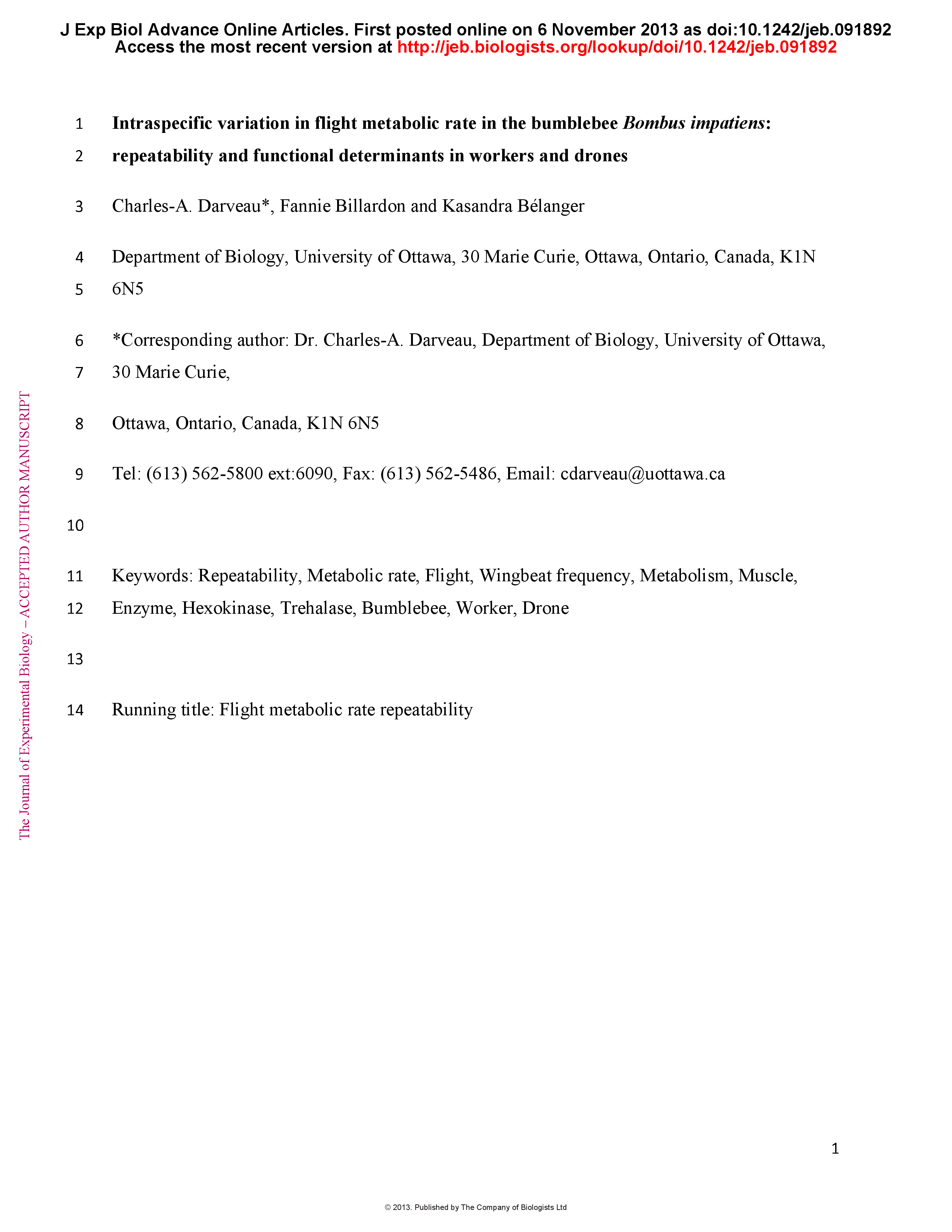Summary
The evolution of flight energetics requires that phenotypes be variable, repeatable and heritable. We studied intraspecific variation in flight energetics in order to assess the repeatability of flight metabolic rate and wingbeat frequency, as well as the functional basis of phenotypic variation in workers and drones of the bumblebee species Bombus impatiens. We showed that flight metabolic rate and wingbeat frequency were highly repeatable in workers, even when controlling for body mass variation using residual analysis. We did not detect significant repeatability in drones, but a smaller range of variation might have prevented us from finding significant values in our sample. Based on our results and previous findings, we associated the high repeatability of flight phenotypes in workers to the functional links between body mass, thorax mass, wing size, wingbeat frequency and metabolic rate. Moreover, differences between workers and drones were as predicted from these functional associations, where drones had larger wings for their size, lower wingbeat frequency and lower flight metabolic rate. We also investigated thoracic muscle metabolic phenotypes by measuring the activity of carbohydrate metabolism enzymes, and we found positive correlations between mass-independent metabolic rate and the activity of all enzymes measured, but in workers only. When comparing workers and drones that differ in flight metabolic rate, only the activity of the enzymes hexokinase and trehalase showed the predicted differences. Overall, our study indicates that there should be correlated evolution among physiological phenotypes at multiple levels of organization and morphological traits associated with flight.








